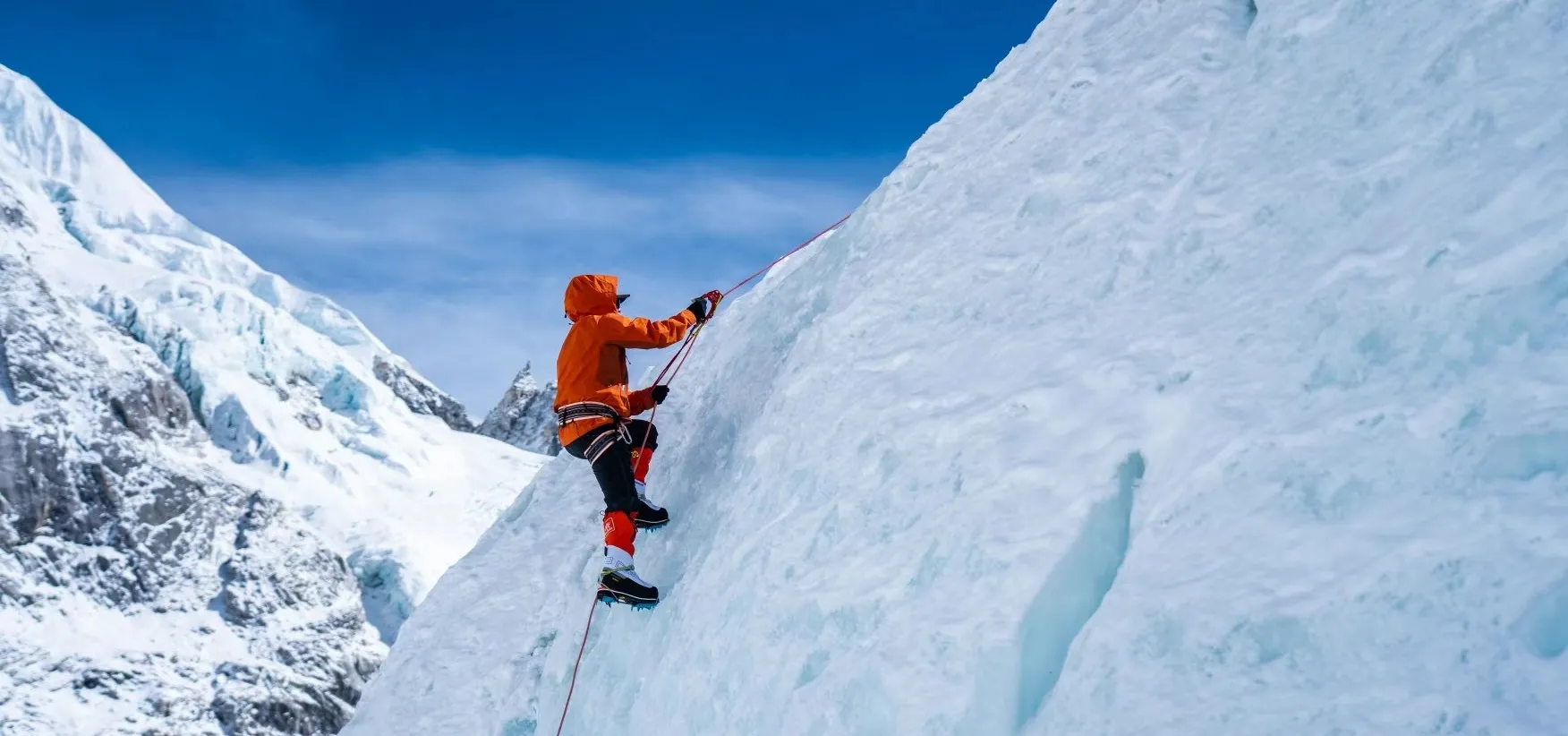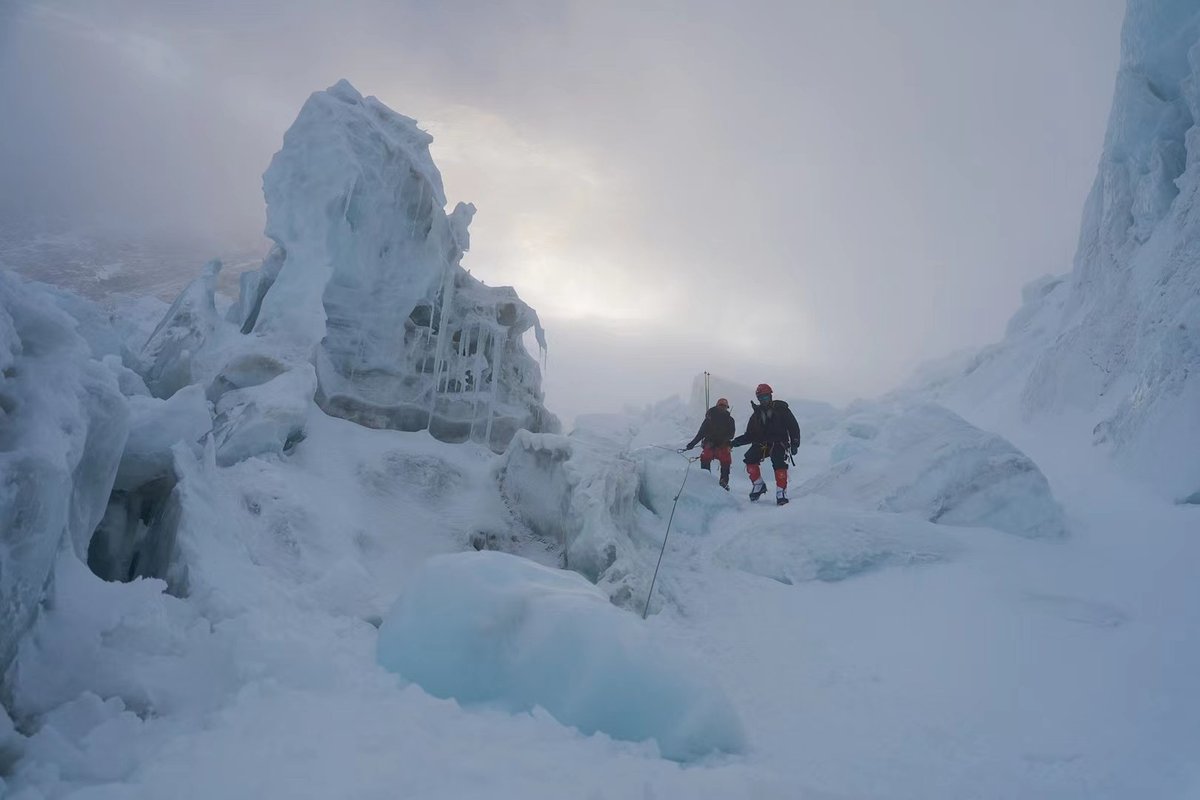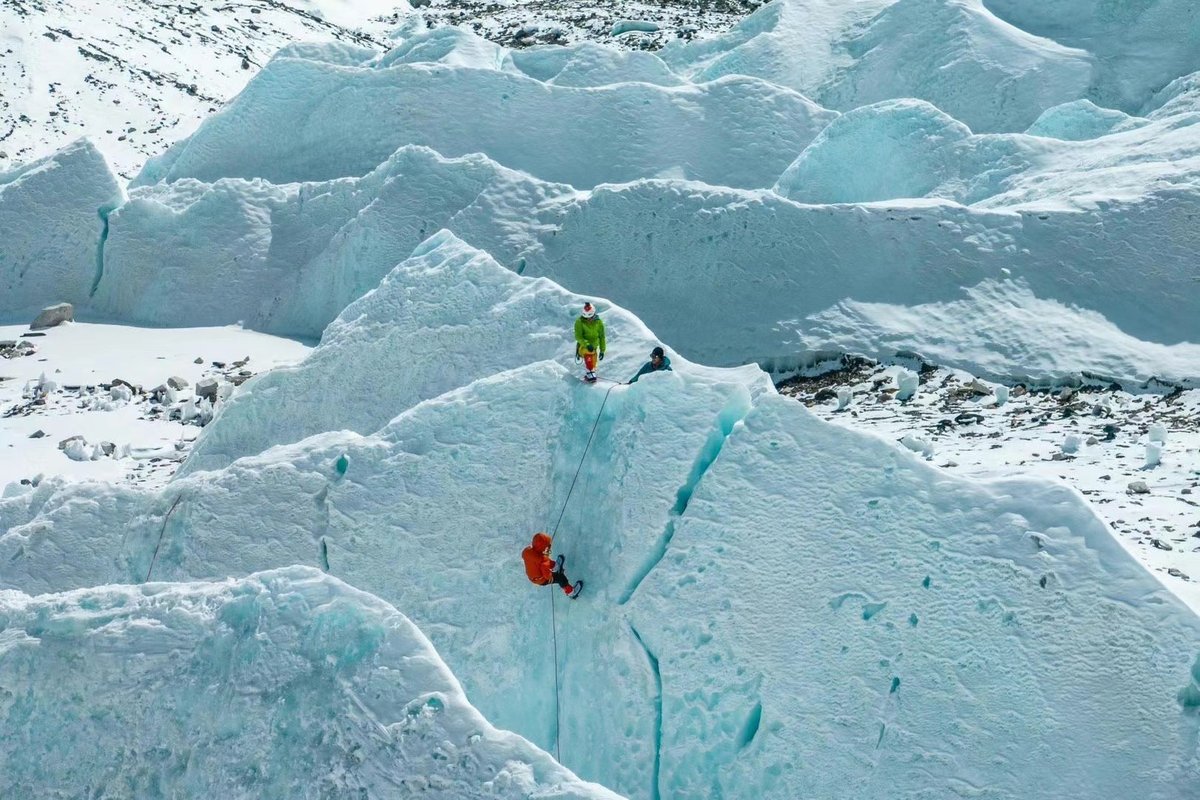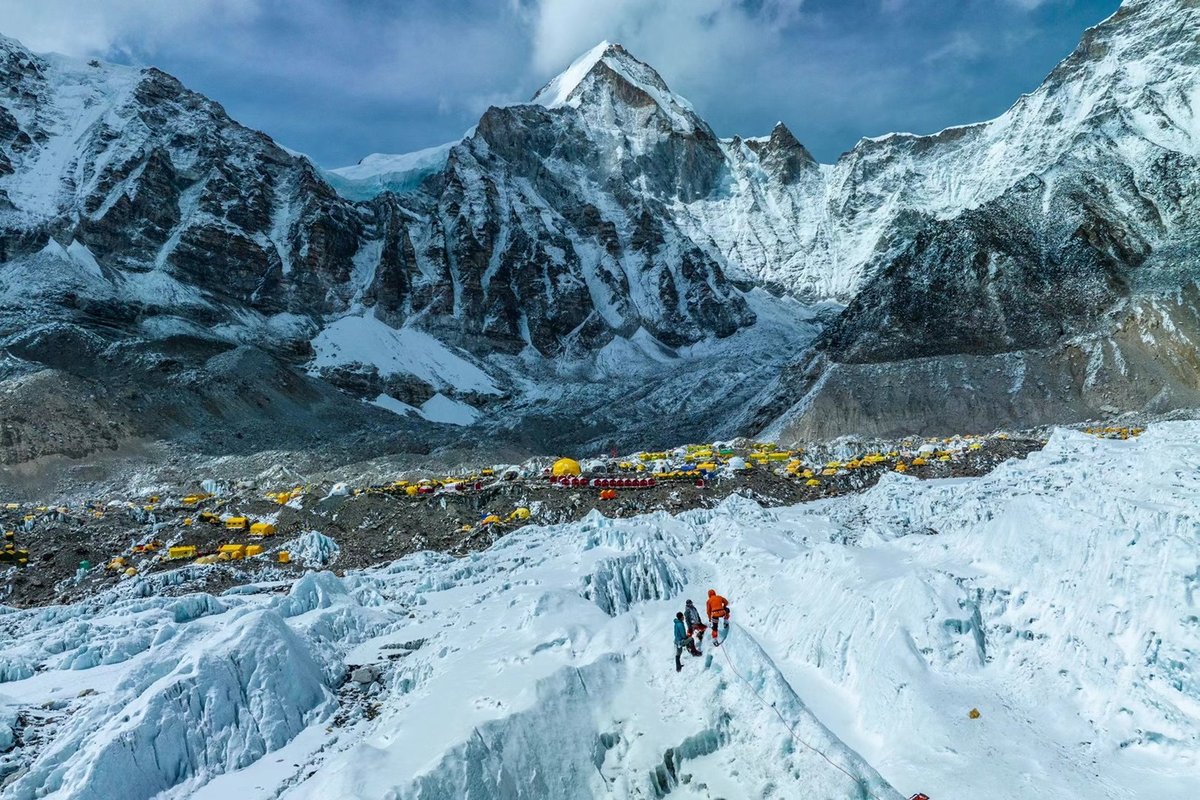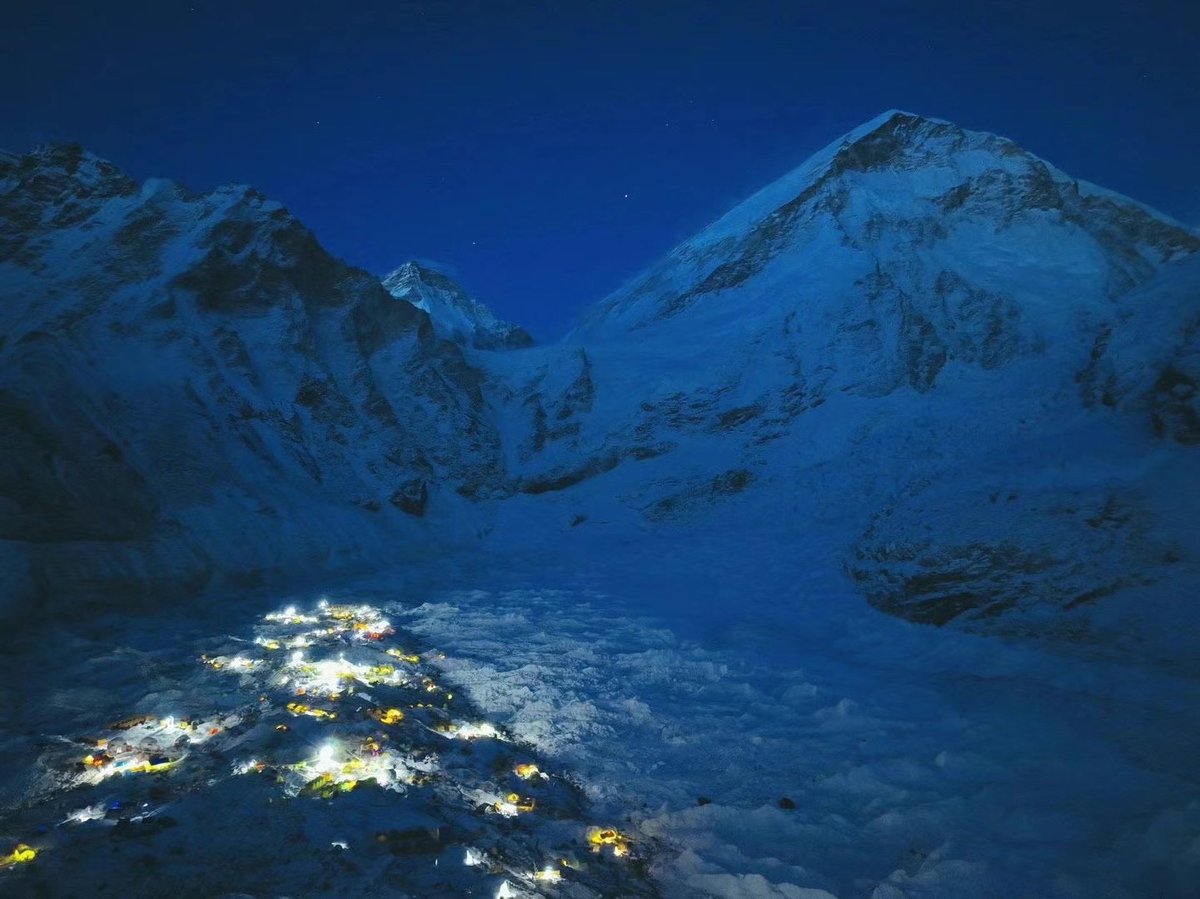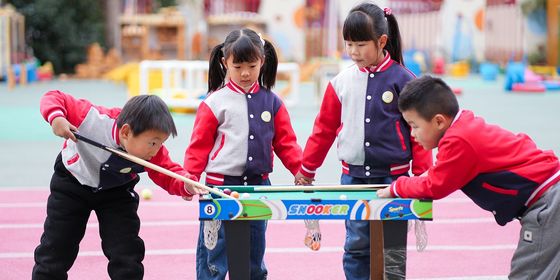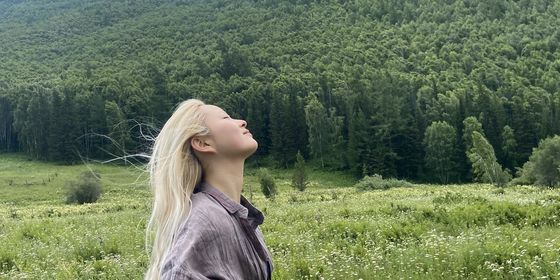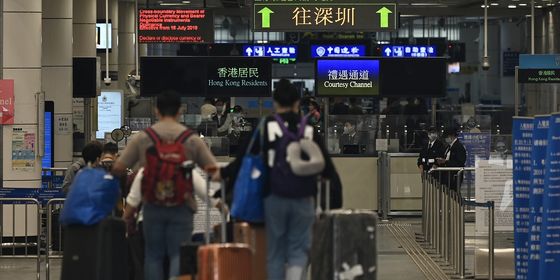Despite the dangers and exorbitant cost, Chinese climbing enthusiasts have joined a global craze for conquering the Earth’s highest mountain
The pinnacle of Qomolangma, the highest point on Earth at 8,848 meters up, paints a breathtaking tableau of ice and sky. Yet the icy crevices of this mountain, better known as Everest in the West, guard a chilling secret: They are the final resting place for dozens of climbers who have succumbed to its merciless altitude, from which Liu Qing narrowly escaped on May 17 this year.
“I thought I was done for,” Liu recalls to TWOC, still sporting a bruise on his arm a month after an ice sheet collapsed under him without warning as he was crossing the Khumbu Glacier, sending him and three Sherpa guides tumbling into a crevasse. Survival instinct kicked in as Liu struggled to right his body amidst the shards of ice, before a Sherpa guide pulled him up with a rope, sparing him from certain death. “The journey to the summit of Qomolangma is extremely cruel,” he says.
The “death zone” of Mount Qomolangma, defined as the sections above 8,000 meters in altitude, has claimed the lives of more than 100 climbers since 1921, accounting for about one-third of all deaths on the mountain. Thanks to an explosion in the popularity of outdoor sports, bolstered this year by the lifting of pandemic travel restrictions and by social media, Chinese climbers are increasingly part of this statistic. According to the Himalayan Database, which tracks mountain fatalities, the number of dead or missing climbers this season reached a staggering 17 as of May 2023 (including one Chinese national) making this past climbing season the deadliest in Qomolangma’s history. Since 1921, at least 13 Chinese climbers have died on the mountain.
Even after the end of the annual March-to-May climbing season this year, controversy over Qomolangma’s mountaineers remains high in China. In late May, a Chinese woman who was saved during a near-fatal incident by two other Chinese climbers and two Nepalese Sherpa guides was caught in a social media firestorm after being accused of refusing to pay 10,000 US dollars in fees to the guides who helped rescue her.
The rescuers found the 50-year-old climber surnamed Liu (no relation to Liu Qing), at 8,450 meters altitude—well-within the “death zone”—where the severely limited oxygen can cause physical exhaustion, disorientation, and death. High winds, low visibility, unpredictable storms, and freezing temperatures that can plummet suddenly to below minus 30 degrees Celsius compound to make this region particularly perilous. Climbers also risk high-altitude pulmonary edema (HAPE) which causes excessive fluid buildup in the lungs and can be fatal.
The start of 2023’s climbing season also coincided with the tail end of a Covid-19 wave across China as well as the start of an H1N1 outbreak, and the Base Camp of the South Col in Nepal was a hotspot for infectious disease. Xie Ruxiang, a 54-year-old climber who helped rescue Ms. Liu, tells TWOC he had to delay his climb for three days after he contracted H1N1 and rested during the trek to the Base Camp at 5,364 meters.
Liu Qing, a freelance outdoor photographer by trade, tells TWOC that the pandemic also led to a shortage of staff, including local Sherpa guides who hail from a Nepalese ethnic group renowned for superior climbing skills and extreme endurance for high altitudes. “We had a very young Sherpa guide named Mingma who caught Covid-19. Due to a severe cough, he had to stop working and get medical treatment.”
Climber’s high
As the 70th anniversary of when Edmund Hillary and Tenzing Norgay became the first known humans to conquer the world’s tallest peak, 2023 witnessed a surge in climbers attempting to reach its summit. According to Nepal’s Department of Tourism, the country issued a record 478 Qomolangma climbing permits to foreigners this season. Together with their local Sherpa guides, over 1,000 people have attempted to climb the mountain from the Nepalese side this year. Though Qomolangma can also be climbed from its North Col in China’s Tibet Autonomous Region, more than 90 percent of climbers this year started on the mountain’s southern slope in Nepal, where it is far easier to get a permit to climb.
This was also the first climbing season after China lifted border control restrictions in place since 2020, leading to record numbers of travelers across the country and abroad. Climbers from China were issued 96 passes to climb Qomolangma from Nepal this year, the most of any country, while US climbers took second place with 87.
Expeditions by Chinese climbers are often closely followed on social media back home. A 16-year-old girl from Changsha, Hunan province, was hailed as “The strongest high school student on the planet” by Chinese netizens, after she successfully reached the summit in May this year, thus becoming the youngest female in China to do so. The Hillary Step, a narrow, steep rock face climbers must traverse near the summit, also went viral due to photos of a “traffic jam” at 2 a.m. in early May when, spurred by a fleeting period of favorable weather, more than 100 climbers seized the opportunity to ascend.
More tragically, the story of 52-year-old climber Chen Xuebin from Guizhou province in southwestern China, who lost his life in the death zone, was also closely followed by the Chinese public. Reports from Nepal local media indicate that Chen died during an attempt to swap his eyeglasses and discard his oxygen canister—a necessity for survival when breathing in the thin air at high altitude.
Fan Qian, who was climbing with Chen at the time, told Chinese media that Chen fell when his crampons got caught in a rope, and died after failing to help himself up. Fan suspected that Chen couldn’t see at that point because of snow-blindness, a painful, temporary visual impairment caused by overexposure to the sun’s UV rays—up to 80 percent of which can be reflected by snow—that is easily overlooked among climbers inexperienced with extreme altitudes. Chinese news reports quoted an anonymous source who said that, though he was physically fit, Chen’s previous high-altitude climbing experience was limited to mountains of 5,000 to 6,000 meters.
Many within the climbing community have suggested over-issuance of permits and profit-driven expedition companies have created overcrowding on the mountain by inexperienced climbers, leading to an increase in accidents. Ang Norbu Sherpa, President of the Nepal National Mountain Guide Association, suggested to The Guardian in May that the Nepalese government should consider limiting the number of climbing permits, currently a vital revenue source for the country at 11,000 US dollars each.
Alan Arnette, a mountaineer who scaled Qomolangma in 2011 and now a regular commentator on its conditions, told The Guardian he blamed “inexperienced clients who push themselves too hard and do not turn back soon enough” for the high death toll this year. Qomolangma is no longer reserved for hardened mountaineers. Instead, the south slope has evolved into a spectacle for tourists attracting an ever-increasing crowd of climbers of all ages, genders, and physical conditions.
Liu Qing describes the management of expedition companies as “relatively chaotic,” and says there are few industry regulations imposed on them, which results in cost cutting that may risk climbers’ safety. “There are no less than 40 expedition companies offering climbing services, and they are a mixed bag,” he tells TWOC. “Some are involved in ‘price wars,’ and they have no hard requirements for climbers’ experience or physical conditions. Obtaining a climbing permit doesn’t even require a health report, as long as the climber secures their own insurance.”
The business of summiting
Commercial mountaineering on Qomolangma began in earnest in the early 1990s, when guiding companies started leading expeditions to the summit. This was a significant shift from the previous era, when Qomolangma was primarily the domain of national expeditions and highly experienced mountaineers.
By the mid-2000s, dozens of foreigners had set up expedition companies in Nepal, and traffic on the mountain soon ballooned from 40 to 50 to hundreds of climbers per year. The cost of this trip can vary wildly, ranging from 24,000 to 90,000 US dollars, depending on the services included and the level of luxury. Climbers can pay higher fees for two or more experienced Sherpa guides, more oxygen bottles, individual tents, comfortable mattresses, and even staff to boil water and cook for them.
According to Xie, there’s an “unwritten rule” that the Sherpa guides get 1,500 dollars each in bonuses if a client successfully reaches the summit. However, to get their guides to assist in the rescue of Ms. Liu, he and Fan Jiangtao, the other climber, paid 5,000 dollars per person in bonuses. This is a considerable expense for Ms. Liu, a bank employee whose annual income, according to Liu’s friend as quoted in an article for Sohu News on June 12, was just over 100,000 yuan (14,000 dollars), and who had already paid nearly 400,000 yuan (56,000 dollars) for the expedition, excluding roundtrip flights to Nepal.
On the north side of Qomolangma, in Tibet, the first and only Chinese company to provide guiding services is the government-affiliated Tibet Mountaineering Expedition company, established in 2001. Compared to the crowd of climbers on the southern slope, the northern slope of Qomolangma saw only 26 people attempt to reach the summit this year, 13 of them part of a Chinese scientific expedition. In response to the pandemic, Chinese authorities closed their side of Qomolangma for all of 2021 and 2022.
The Tibet Mountaineering Expedition company is the only business allowed to guide climbers on the mountain’s north face, and charges fees as high as 450,000 yuan (62,000 dollars) to ascend. Climbers must also have prior experience climbing at over 8,000 meters, Liu Qing tells TWOC. According to the Tibet Sports Administration, both domestic and foreign climbers who wish to climb Qomolangma from the Chinese side must be between 16 and 70 years old and must apply for climbing permits as part of a group. Individuals are not allowed to apply on their own.
Xie, who is a cofounder of the Mountaineering Association of Peking University, has been climbing mountains since the 1980s, though he took a 30-year break after university graduation to focus on work. In 1991, he even gave up his attempt to reach the summit of Muztagh Ata in Xinjiang to save other climbers. “Reaching the summit isn’t the goal, learning to give up is more meaningful than persisting,” Xie tells TWOC.
Liu Qing is also a seasoned outdoor climbing enthusiast who began high-altitude ice climbing in 2011 as a graduate student at Peking University. Climbing Qomolangma this year marked his 17th climb above 5,000 meters. He believes the pursuit of fame and glory is behind the current rush to climb the world’s highest peak. “Even for college entrance exams or studying abroad, summiting Qomolangma can be an added bonus,” he says. “However, it’s only after you go to Qomolangma that you realize many people actually don’t know the magnitude of the risk they’re taking. Everyone is betting that they will be the one to leave unscathed, and that if something happens, it will happen to someone else.”
Melting away
According to Yuba Raj Khatiwada, the director of Nepal’s tourism department, variable weather caused by climate change is another reason that this past climbing season was one of the deadliest on record.
The Earth’s highest glacier is losing ice at an alarming rate each year, according to a study published in the Nature Portfolio journal Climate and Atmospheric Research in 2022. The paper estimates that the South Col Glacier (another name for the Khumbu Glacier), which serves as a path for climbers en route to the summit of Qomolangma, may have lost half its mass since the 1990s. This loss is largely attributable to rising temperatures in the region, and the glacier may vanish completely by the mid-century if current trends continue, slowly releasing decades’ worth of frozen trash and human remains.
The Khumbu Glacier is also one of the most hazardous sections of the southern route. Situated between Everest Base Camp at 5,364 meters and Camp 1, at 5,943 meters, it is notorious due to the numerous unstable ice blocks, or seracs, present in and above the icefall. These elements, combined with seemingly bottomless crevasses—some over 45 meters deep—contribute to the extreme danger of this segment of the climb. The Himalayan Database has recorded 57 deaths on the Khumbu Icefall from 1953 to 2022.
“We Chinese call this a ‘terrifying glacier,’” says Liu Qing, who saw first-hand how the glacier was melting on a daily basis on the mountain. “We could hear the great crash of ice falling three to four times an hour in the base camp.”
After Liu’s own near-death experience crossing the glacier, all five people on his expedition fled the area as swiftly as they could. “I felt on edge, as if everything around me was a potential threat. Every rustle of the wind, the sound of gusts hitting the glacier, the noise of small stones falling from the ice mountain, any sound made me feel like everything around me was about to collapse,” he says.
Xie also felt a sense of dread while training for acclimatization on the Khumbu Glacier: “We passed a spot where an avalanche had occurred. If we had set off half an hour earlier, we could have been buried.” He later chartered a helicopter for this part of the route so that he would not have to cross the glacier.
On the night when he relinquished his summit ambition to save a life, Xie had to come to terms with the fact that his Qomolangma journey, at least this time, was over. He, along with Fan Jiangtao, has since implored internet trolls to stop harassing Ms. Liu, who came to Changsha to personally thank her rescuers on June 7. He speculates that, as an ordinary person, Ms. Liu might not have had the media savvy to make the sort of statement the public expects. The company that arranged Ms. Liu’s trip ultimately agreed to pay the rescue fee, bringing an end to the controversy.
Despite the higher costs, Xie is also thinking of trying the northern slope next year, where the tighter regulations and more timely rescue operations might mean he wouldn’t have to save another climber. But he doesn’t regret having rescued Ms. Liu. “You only have one life,” he says. “If I cold-bloodedly refused to assist others, I would feel terrible. Perhaps that day, the one I truly saved was myself.”
Deadly Summit: Why Chinese Climbers Flock to the World’s Highest Peak is a story from our issue, “Small Town Saga.” To read the entire issue, become a subscriber and receive the full magazine.





